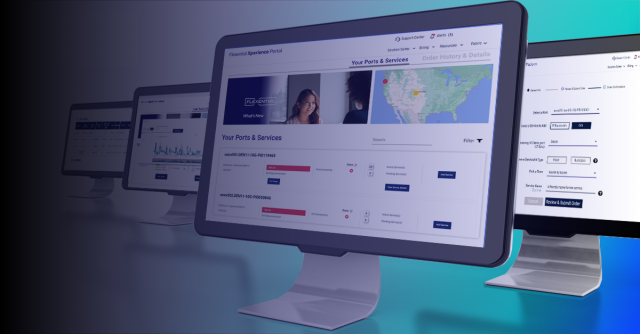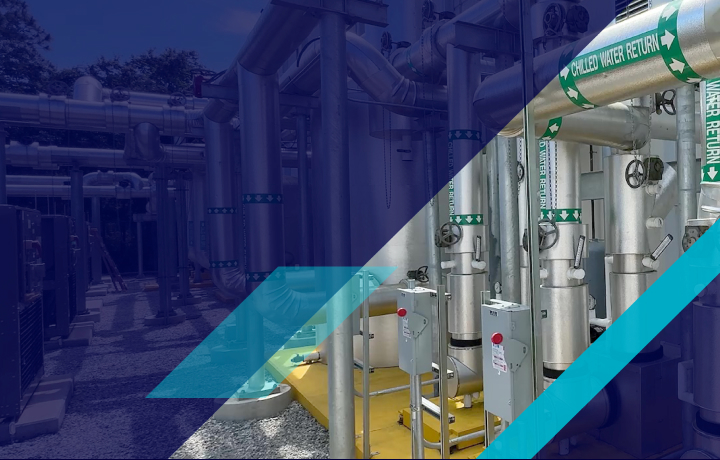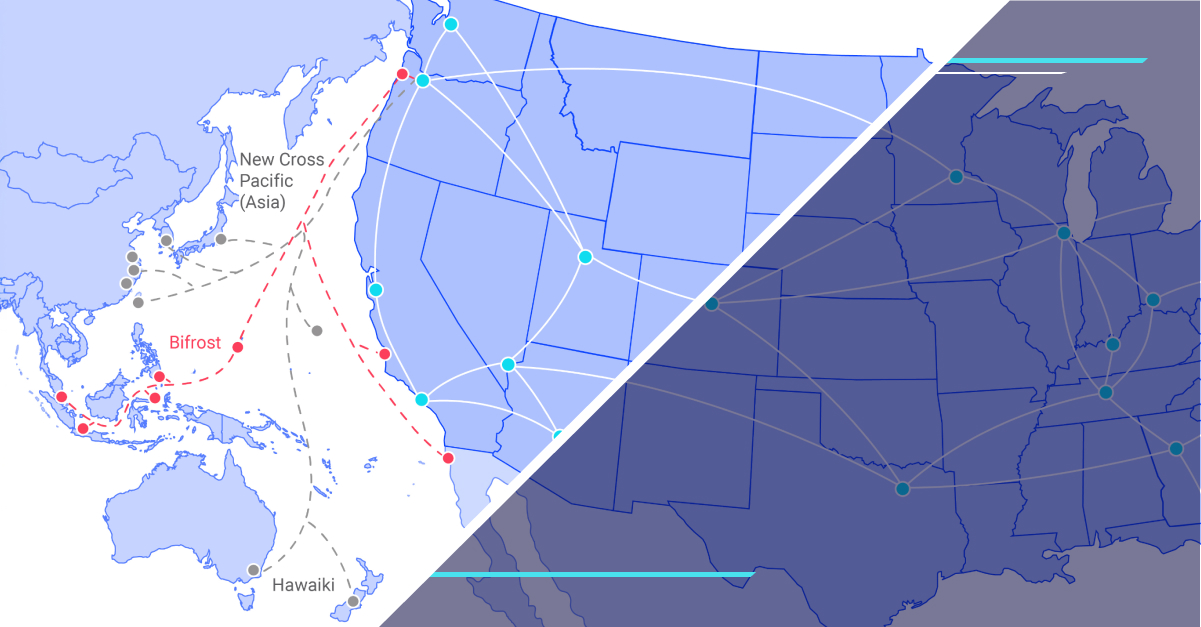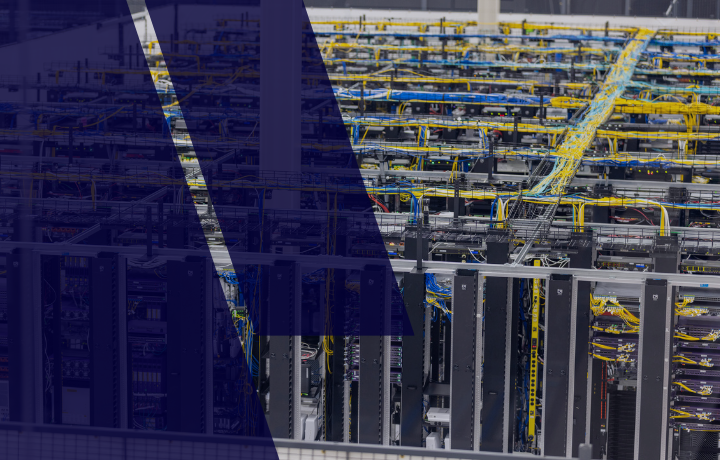What is infrastructure monitoring and why does it matter?
Learn what infrastructure monitoring is, why it’s essential for IT operations, and how to implement it effectively across cloud, colocation, and data centers.

IT teams don't just need systems that work; they need to know how they're working, why they're slowing down, and what to do next. This knowledge sits at the heart of IT infrastructure management and connects directly to how well your cloud infrastructure strategies perform. When your systems crash, lag, or fall out of sync, your business pays the price. That's exactly why smart organizations use infrastructure monitoring to spot problems early, cut downtime, and keep everything running the way it should.
Without it, you’re guessing. With it, you’re in control.
Understanding infrastructure monitoring
Definition and purpose
Infrastructure monitoring tracks the health, performance, and availability of every system your business counts on: servers, networks, storage, and all the pieces in between.
What's the point? You get to see what's happening before your users start complaining. Instead of scrambling to fix outages after they hit, your team can spot trouble brewing, find what's causing slowdowns, and fix things before anyone notices.
This matters most if you're managing systems people depend on, deploying new code regularly, or responsible for keeping digital services running smoothly. Running workloads in a data center? Moving to the cloud? Managing a hybrid setup? Infrastructure monitoring helps you catch problems instead of chasing them.
Key components and metrics to monitor
Common infrastructure elements
Infrastructure monitoring watches over many different components, and each one has its own warning signs and performance markers. Here's what most teams focus on:
- Servers: Your physical and virtual servers do the heavy lifting in most IT environments. Monitoring tracks CPU load, memory usage, disk space, and temperature to prevent crashes and keep workloads running smoothly.
- Networks: Your network infrastructure—routers, switches, firewalls, and endpoints—needs constant attention for traffic patterns, delays, and weak spots that could break connections.
- Databases: Database health and speed matter for any application that needs fast queries and reliable data access.
- Virtual machines (VMs): VMs change constantly by design. Monitoring helps catch when they're fighting over resources, slowing down, or having issues with hypervisors or host systems.
- Containers (e.g., Docker, Kubernetes): Containers grow and shrink quickly across distributed systems. Monitoring tools track their lifecycle, resource usage, and orchestration health to prevent stability issues—especially when you're in production.
Essential metrics
Once you know what to monitor, you need to understand which numbers actually tell you something useful. These indicators show you how your infrastructure is performing right now... and when you need to act.
- CPU and memory usage: Sudden spikes can mean an application is misbehaving, you're running out of resources, or you need to scale up. When usage stays high without room to breathe, you're asking for crashes or delays.
- Disk I/O and storage health: Watching read/write operations, available storage, and disk failure warnings keeps your data safe and performance solid, especially when you're handling lots of transactions.
- Network traffic and latency: Drops in speed, lost packets, or increased delays can signal congestion, hardware problems, or configuration mistakes that slow down apps and frustrate users.
- Service uptime and response times: These numbers show whether your systems are available and how fast they respond to requests. Monitoring tools track outages, response speed, and whether you're meeting your SLA commitments.
Having these metrics gives your IT team what they need to troubleshoot faster, improve performance, and avoid unexpected downtime. The trick isn't just collecting data—it's knowing what "normal" looks like so you can spot when something's wrong.
What infrastructure monitoring means for cloud, colocation, and data centers
Infrastructure monitoring varies depending on whether your systems reside in the cloud, colocated facilities, or on-premise data centers. The Flexential Experience Platform (FXP) enables end-to-end visibility, control, and performance optimization across these hybrid environments—all through a single digital interface.
Cloud environments
FXP provides a unified digital experience that allows Flexential customers to visualize and manage their cloud deployments in real time. From the portal, users can monitor key metrics like CPU, memory, and storage usage and dynamically scale resources with just a few clicks. FXP also enables seamless management of backups, empowering users to restore individual files or entire directories on demand. Whether operating within public, private, or Flexential-hosted clouds, FXP consolidates performance monitoring so customers can quickly troubleshoot issues and optimize operations—all from one easy-to-use portal available at no additional cost.
Colocation facilities
For customers colocating hardware in Flexential’s 40+ data centers across 18 markets, FXP delivers detailed environmental and power monitoring down to the cabinet level. Users can drill into real-time data on temperature, humidity, space, and power usage, providing actionable insight into infrastructure health. FXP also facilitates bandwidth management, enables performance tracking against SLAs, and supports simplified user access control, service ordering (e.g., CrossConnects), and audit-ready reporting for SOC and other certifications. By consolidating these capabilities, FXP makes managing colocated environments both comprehensive and convenient.
Data centers (on-prem solutions)
At Flexential, our data centers are purpose-built for resiliency, high efficiency, and sustainability. We follow proven data center best practices to support advanced workloads, including AI and HPC. Our facilities feature hot/cold aisle containment, custom airflow controls, and real-time environmental monitoring. Customers gain visibility into key metrics like power usage, temperature, and humidity, critical data for maintaining uptime and optimizing capacity. These monitoring capabilities are built into our managed infrastructure services to support enterprise-grade performance and operational standards.
What is data center monitoring?
It combines IT system health (servers, storage, network) with facility metrics (power, cooling, environmental conditions). This lets you detect issues faster—especially when environmental factors threaten IT reliability.
What is Data Center Infrastructure Management (DCIM)?
Data Center Infrastructure Management (DCIM) lets organizations actively monitor and manage their physical colocation infrastructure in real time. With Flexential DCIM capabilities, you can view cabinet-specific data like power usage, the number of power circuits, temperature, humidity, and more.
This functionality helps IT teams maintain visibility and control over distributed environments, which can be tough to monitor and maintain otherwise. Through the colocation dashboard, you get immediate insight into critical environmental and power metrics, helping you increase operational efficiency and manage costs more effectively.
DCIM also handles operational needs beyond monitoring. You can receive proactive alerts on critical infrastructure components, manage access permissions, view invoices, and order additional services as needed—all within the same interface.
Best practices for effective monitoring
Setting up infrastructure monitoring isn't just about flipping on a tool and watching charts. To make monitoring actually useful (instead of just overwhelming), you need clear goals, consistent processes, and the right people involved.
Here are the core practices that make monitoring work:
1. Define KPIs that map to real business goals
Start by identifying what success looks like for your infrastructure. Are you aiming to reduce downtime, improve app performance, or hit specific SLA targets? Your monitoring strategy should track metrics that support those goals, such as service uptime, response time, capacity utilization, and power efficiency.
Tip: Align monitoring KPIs with your ITSM or compliance frameworks (like ISO 27001 or SOC 2) to support audit readiness and reporting.
2. Set actionable thresholds and alerts
Avoid alert fatigue. Thresholds should reflect what's normal for your environment, not random limits. Use historical data to define meaningful baselines, and configure alerts that escalate only when necessary. Critical issues should trigger an immediate response, while non-urgent ones can be logged for review.
Example: An 85% CPU spike for 10 seconds might be harmless, but sustained load over 5 minutes could indicate a failing service.
3. Use dashboards for real-time visibility
Dashboards are more than eye candy. They provide your team with a live view of systems that matter, whether that’s cloud infrastructure, physical servers, or colocation cabinets.
Pro tip: Customize views for different roles—engineers, executives, and support teams don’t need the same level of detail.
4. Regularly audit and update configurations
Your infrastructure changes, so your monitoring should change too. Schedule reviews to validate alert thresholds, remove outdated checks, and account for new systems, users, or workloads. Stale configurations don't just waste resources; they can also leave you blind to actual risks.
Reminder: Don’t “set it and forget it.” Every new deployment or migration is a chance to refine your monitoring map.
5. Ensure team collaboration and ownership
Monitoring isn't just one team's job. Make sure DevOps, infrastructure, and application owners all understand what's being monitored and why. Define clear roles for alert triage, escalation, and resolution. That way, you avoid confusion and shorten the time from alert to fix.
Tip: Use shared runbooks and integrated ticketing systems so issues flow into the right hands fast.
Emerging trends in infrastructure monitoring
As infrastructure becomes more complex, traditional monitoring approaches are hitting their limits. Static thresholds, isolated tools, and manual triage can't keep up with distributed systems, cloud-native apps, and remote edge environments. Here are some of the biggest trends changing how monitoring works.
AI and machine learning for predictive monitoring
AI isn't just hype; it's helping infrastructure teams get ahead of outages and performance issues. Instead of waiting for metrics to cross a fixed threshold, machine learning can spot unusual behavior early and suggest action before users ever notice a problem.
At Flexential, we’re already seeing the impact of AI and data center infrastructure working together to improve how environments are monitored and maintained. We're using AI to improve uptime, increase power efficiency, and speed up incident response across our facilities. As these technologies continue developing, we expect AI to play a bigger role in automating root cause analysis, detecting anomalies, and enabling self-healing systems that reduce manual intervention and support greater resilience.
Monitoring for multi-cloud and hybrid environments
Monitoring used to mean watching one data center. Now, it means keeping track of systems spread across multiple clouds, physical locations, and on-prem environments. That adds complexity: different tools, different SLAs, and more ways for things to go wrong.
Unified observability platforms
Monitoring shows you what’s broken. Observability helps you understand why.
The move toward unified observability platforms brings logs, metrics, traces, and events together in one place, giving teams a complete picture of application and infrastructure behavior. Instead of juggling separate tools for storage, compute, network, and apps, observability platforms provide context-rich insights that reduce time to resolution.
Edge computing and IoT monitoring
As more workloads move closer to the edge, whether for latency, compliance, or bandwidth reasons, the challenge is how to monitor systems that may be far from traditional data centers.
Edge and IoT devices often run lightweight, specialized software in remote environments with limited connectivity. Monitoring these systems requires low-overhead agents, decentralized data collection, and fast local response.
Key takeaways
Infrastructure monitoring isn't just about avoiding downtime; it's about giving your team the visibility and control to grow with confidence. Whether you're managing physical servers in a colocation facility, scaling cloud workloads, or connecting edge deployments, having a monitoring strategy that adapts to your environment is essential.
The most effective monitoring programs are built on:
- Clear KPIs that support business goals
- Smart alerting that filters out noise
- Real-time visibility across hybrid environments
- Proactive support and automation to stay ahead of issues
At Flexential, we help organizations put these best practices into action through our comprehensive suite of managed infrastructure services, secure data centers, and hybrid IT expertise. We give you the tools and support to monitor what matters, so you can focus on what’s next.
Ready to strengthen your monitoring strategy?
Explore our IT infrastructure resources or contact us to see how we can help!
FAQs
What is infrastructure monitoring?
Infrastructure monitoring is the continuous tracking of your IT systems—servers, networks, storage, virtual machines, containers, and cloud services—to ensure they’re healthy, performant, and available. By collecting metrics like CPU usage, network latency, and disk I/O, monitoring tools help you detect anomalies, troubleshoot issues, and maintain uptime.
Why is infrastructure monitoring important for modern IT operations?
Today’s environments span on-premises data centers, colocated racks, multiple clouds, and edge locations. Monitoring gives you the visibility to manage this complexity, catch problems before they impact users, and support proactive maintenance. Without it, teams react to outages instead of preventing them, increasing downtime and operational risk.
What are the key metrics to monitor in an IT infrastructure?
While exact needs vary, most organizations track:
- CPU and memory utilization
- Disk I/O performance and storage capacity
- Network throughput and latency
- Service uptime and response times
- Power usage and environmental factors in data centers
Focusing on these metrics helps you maintain performance, plan capacity, and meet SLAs.
How do colocation facilities handle infrastructure monitoring?
At Flexential, our colocation facilities are built to give you visibility and control over your infrastructure from day one. We monitor critical environmental and power metrics, such as temperature, humidity, and cabinet-level power usage, and make that data available to you as part of our managed services. You can track the performance of your colocated assets, receive proactive alerts, and manage operational needs like access control and service requests. This helps ensure your infrastructure stays secure, efficient, and aligned with your uptime and compliance goals.




